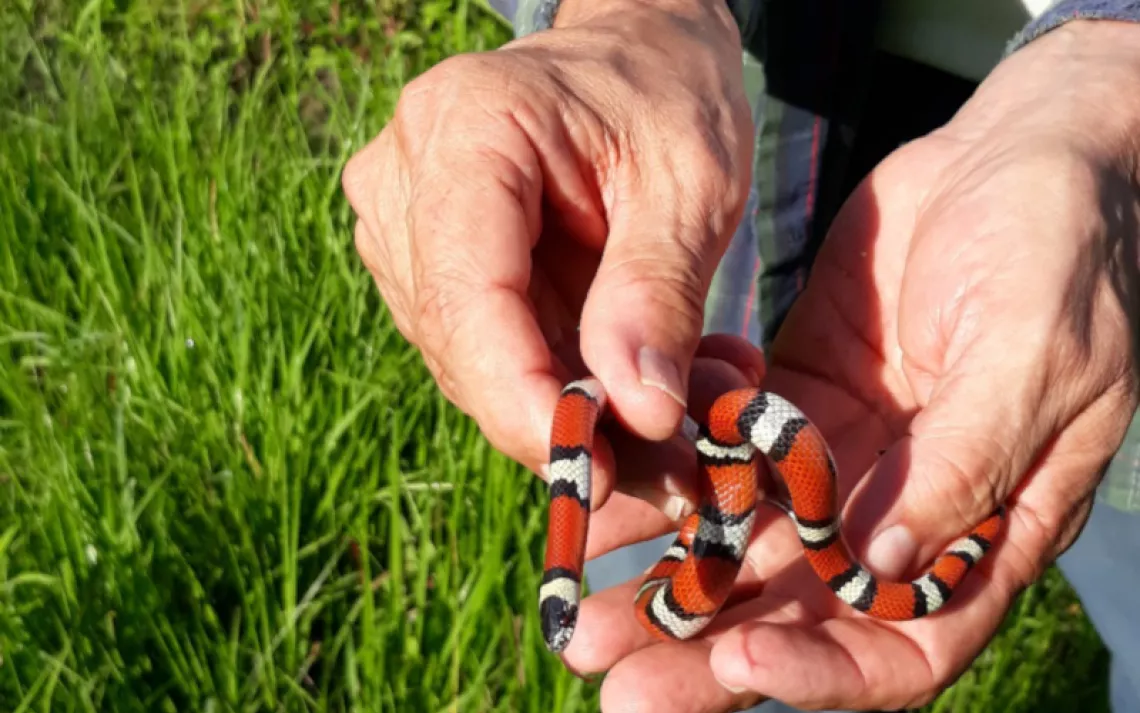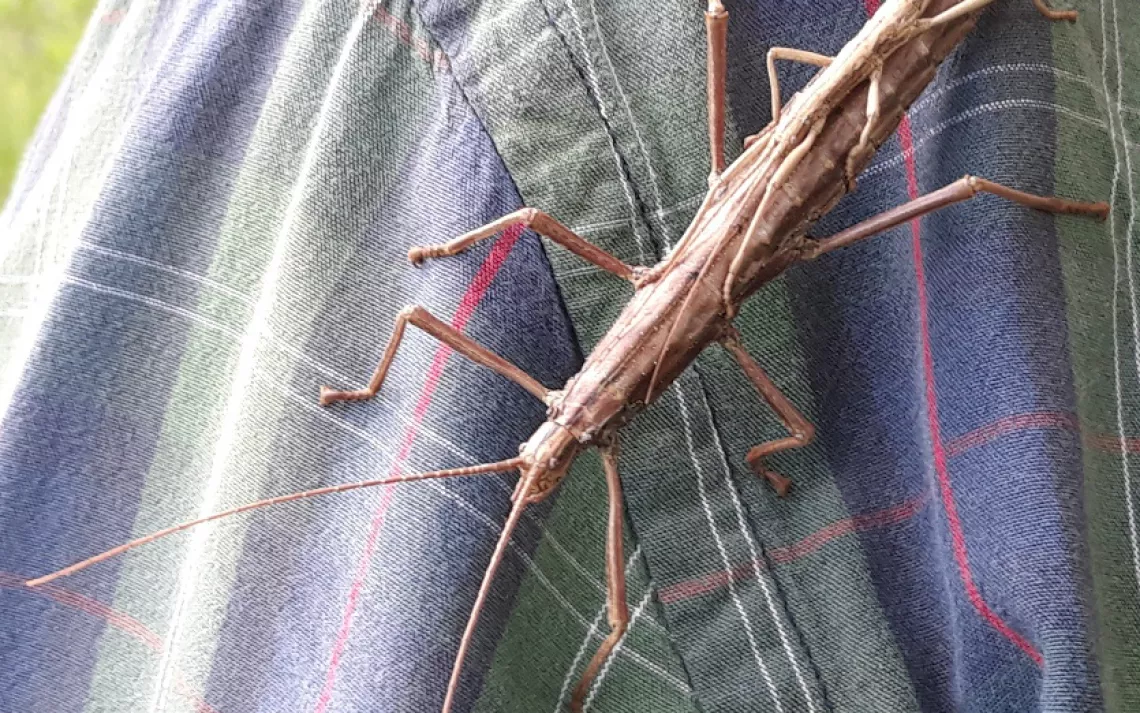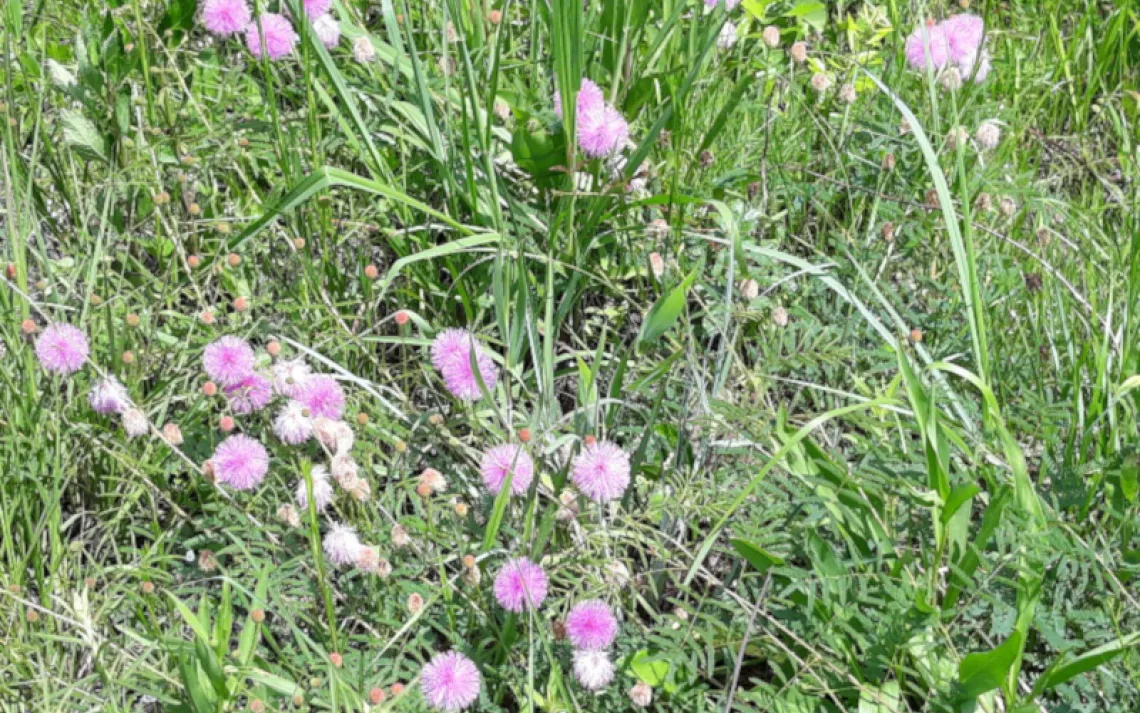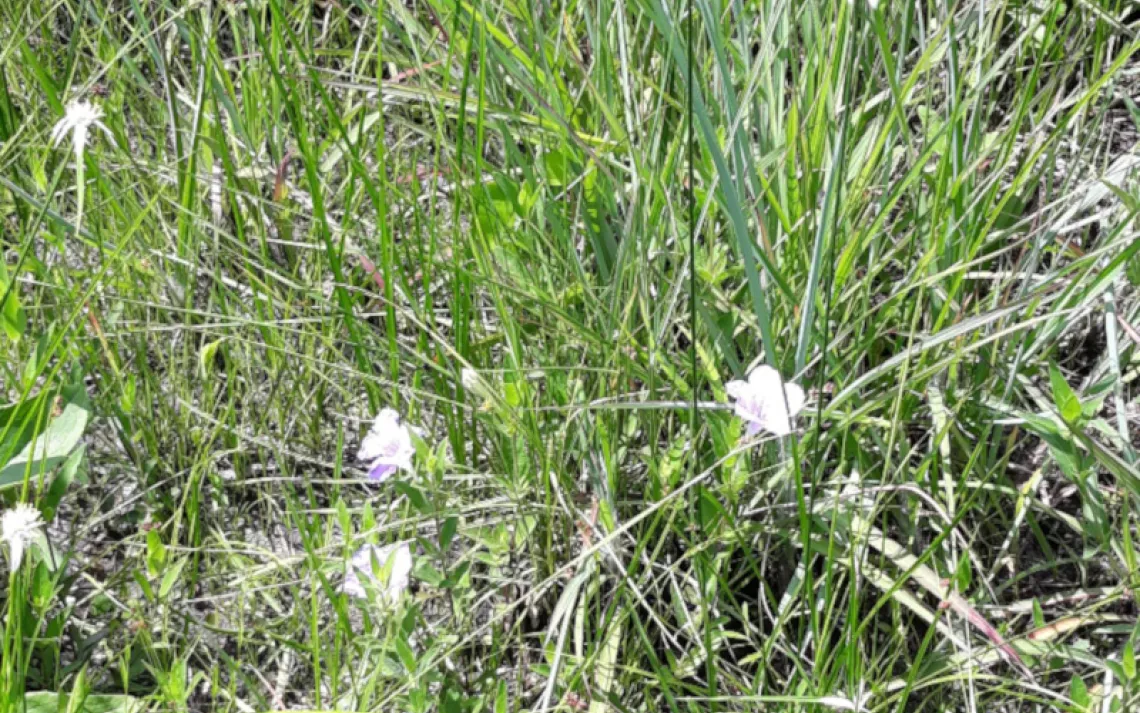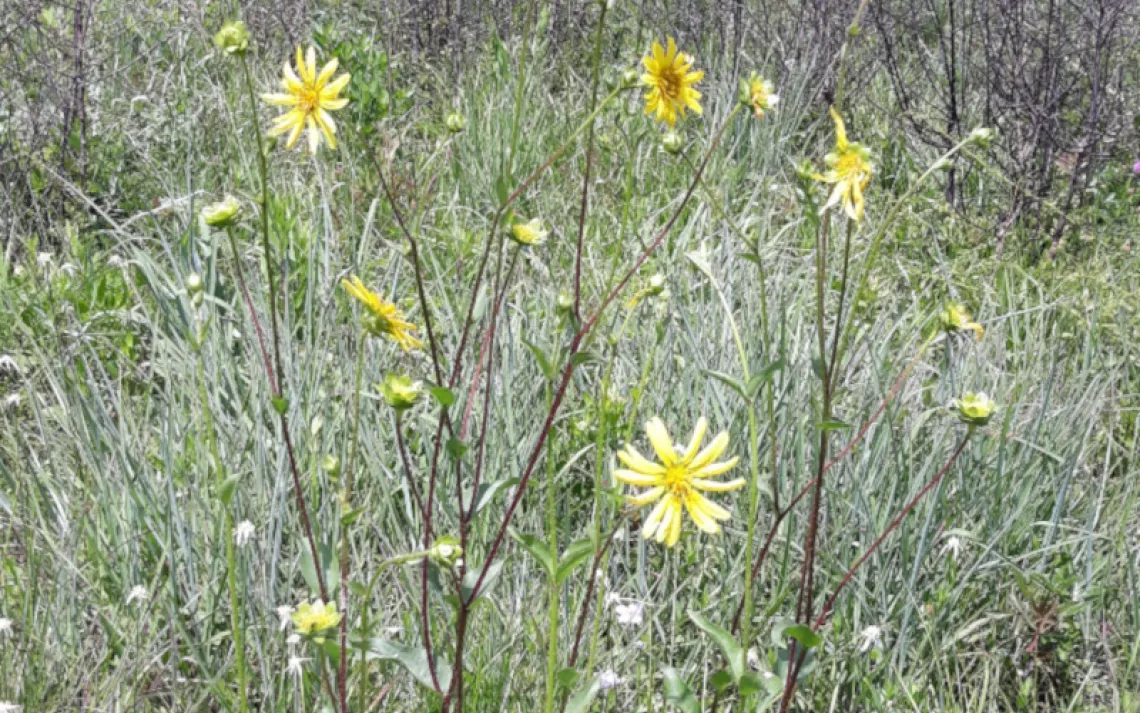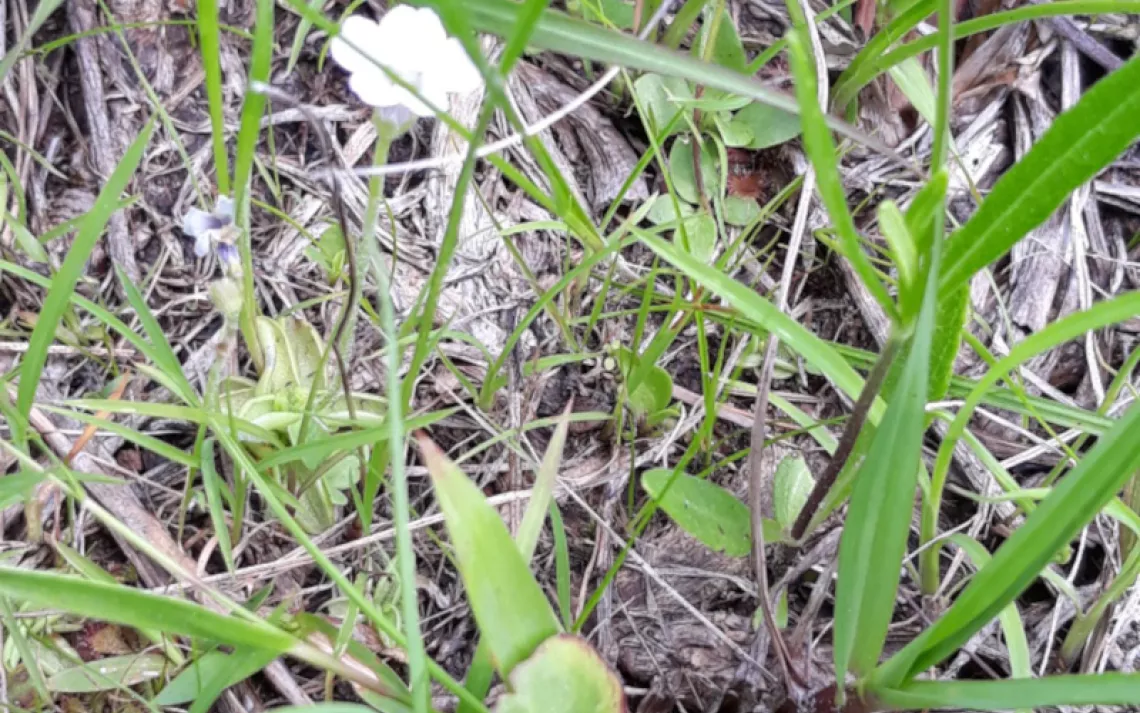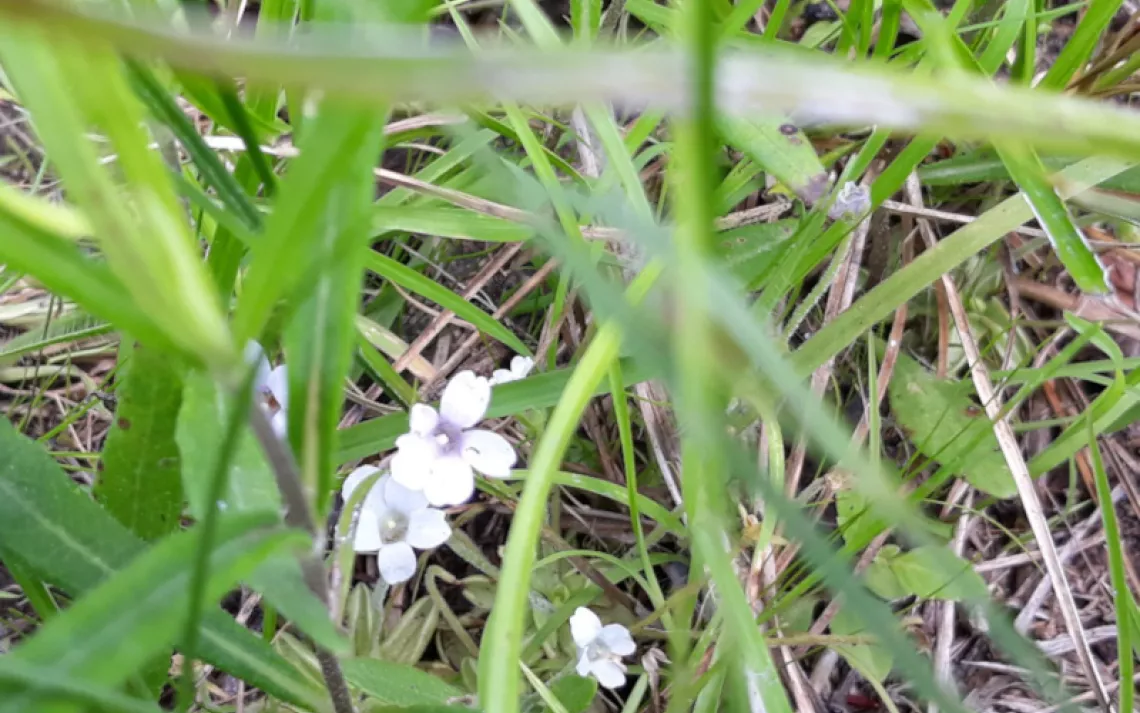By Brandt Mannchen
Whenever I turn onto County Road 2077, in Liberty County, I feel like I am coming home. That’s because Marysee Prairie, the only restored tallgrass prairie in the Big Thicket, sits at the end of this road. I have been visiting Marysee regularly for about 30 years.
On June 12, 2021, I worked at Marysee Prairie with Ellen, Nancy, and Shelby. This was the first time that Shelby attended a workday, and we were delighted. It was “hot as he__”, but hey, in the Summer, in Texas, what do you expect.
We met at 9 am, cut/treated woody plants, like Common Persimmon, Sweetgum, Chinese Tallow, and Yaupon Holly, with herbicide until 11 am, had a free lunch, and then drove to our respective homes feeling good that we had helped restore and maintain a native prairie. What more could you ask for?
The day started out with a bang! I pulled my car up, got my water, loppers, and other gear, and walked over to Ellen, who had the door open and looked busy moving things in and out of the toolshed. As I walked up to her and said hello, she told me there was a snake in the toolshed and she didn’t think it was a “coral snake”.
Ellen knows that I “love” snakes and as expected I got very excited. She showed me where the snake had gone. I moved rakes and shovels and there it was. I looked very carefully before I reached down and picked it up. The snake was a beautiful Western (Louisiana) Milksnake!
Ever since I was a boy, I wanted to find a milksnake in the wild (the toolshed is surrounded by Marysee Prairie and woods, so I call it wild). This was a lifer for me, and I was pleased.
It was a small snake, probably about 6 or 8 inches long. Perhaps a young one from the past year. It moved around in my hands and the red, black, and cream colors were dazzling.
I held the milksnake as Ellen took photos. I showed the snake to Shelby who had just pulled up in her pick-up truck. She thought it was cool. Then I let the snake go in the three-acre woods that is part of the 12.67-acre Marysee Prairie Preserve, and it slid under leaves and disappeared.
Woody plants are growing vigorously, unfortunately, on Marysee. We must keep cutting/treating as much as we can to reduce how they shade and compete with native grasses and wildflowers that grow on Marysee.
Along with Common Persimmon, grape vine grows profusely, which we pulled and cut, and then we treated woody plants with a dab of herbicide on the cut surface.
A prescribed burn was conducted on Marysee in April. This was the first prescribed burn on Marysee in five years. We would like to conduct another burn in the near future to help control woody plants more. If we cannot conduct another burn, we will mow Marysee.
Texas Coneflower, Wild Petunia, Rosin Weed, and Texas Stargrass were some of the common blooming plants we saw on Marysee as we worked. There are Sharp Gayfeather (Liatris acidota) that will soon bloom so in July we will have their show. Two notable plant finds during our visit were a Purple Pleat-leaf and Small Butterwort (carnivorous plant).
We saw Monarch Butterfly, hairstreak butterfly, Green Anole lizard, crawfish chimneys, mating Walking-sticks, White-tailed Deer and Feral Hog tracks, and heard a Yellow-billed Cuckoo. Marysee is a very fecund place.
The heat drove us to lunch and then home, but I felt a sense of release and relief as I walked, photographed, and contemplated on Marysee. In this time of COVID, Marysee is exactly what the doctor ordered. I will take Marysee medicine anytime!
